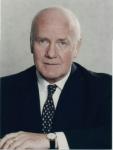The idea originated in a study by Her Majesty’s Inspectorate of Constabularies titled “Closing the Gap”.
The report by Denis O’Connor, former Chief Constable of Surrey identified a disturbing gap in the ability of smaller police forces – such as Lincolnshire’s – to deal with serious organised crime and the threat of terrorism.
He argues that larger police forces would lead to better shared intelligence to tackle organised crime and terrorism and at the same time enable delivery of neighbourhood teams to provide the local policing and visibility we all want to see.
Serious weaknesses had already been highlighted in the present structure following celebrated cases including the Soham murders.
One concern is how a small force deals with a big enquiry. In Lincolnshire, for example, the recent “Trusthorpe murders” enquiry led to a huge drain on local policing.
(Worth noting that the Trusthorpe murders were apparently “spill-over” crimes originating in Nottinghamshire).
O’Connor suggests that with a larger merged force, there would be fewer “extractions” from local policing teams to major enquiries.
Charles Clarke accepted the findings of the Report.
I wonder what the media would have said had he ignored it!
Some media have reported that new Home Secretary John Reid is forcing through the mergers, despite local opposition.

However, The Guardian reports that Reid has made it clear mergers are now on the back burner – and with the challenges on immigration and asylum in the Home Office, that’s hardly a surprise!
In fact Reid has said that he will listen to local views before coming to decisions and that the process will move “at a different pace”.
But he has also stated that given the need to keep up with the changes in criminal activity, the status quo is not an option.

No comments:
Post a Comment